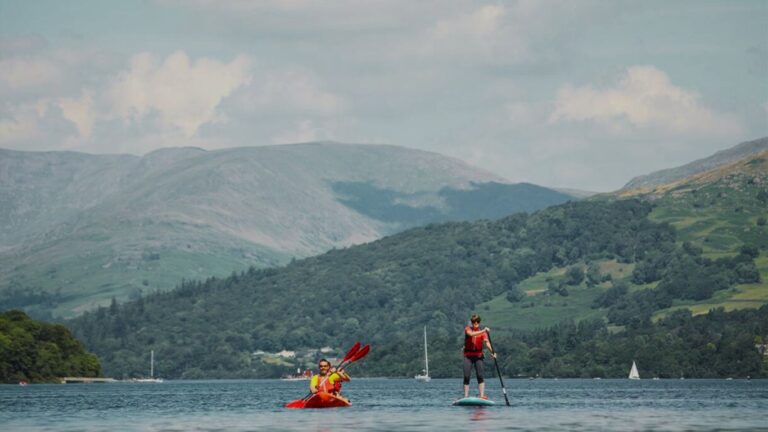Are you interested in kayaking in the Lake District, but don’t know where to start? Do you want to discover some of the best places to kayak in this beautiful region of England? If so, then this blog post is for you!
In this blog post, I will give you a beginner’s guide to kayaking in the Lake District, one of the most popular destinations for kayaking enthusiasts in the UK. I will explain why kayaking in the Lake District is such a great experience, and what you can expect to see and do on your kayaking adventure.
I will also share with you 11 of the best places to kayak in the Lake District, each with its features and challenges. Whether you are looking for a relaxing paddle on a tranquil lake or a thrilling ride on a fast-moving river, you will find something to suit your taste and skill level.
So, if you are ready to explore the natural beauty and wildlife of the Lake District from a different perspective, then read on and find out how to plan your kayaking trip in this amazing region.
Why Choose the Lake District for Kayaking?
Kayaking in the Lake District is a great way to explore the region’s natural beauty and wildlife. The Lake District is a popular destination for kayaking enthusiasts and for good reason. The area boasts some of the most stunning scenery in the UK, with calm waters that are perfect for kayaking.
Kayaking in the Lake District offers a variety of routes, from gentle paddles along tranquil lakes to more challenging routes that take you through fast-moving rivers and rapids. The area is also home to a wide range of wildlife, including otters, kingfishers, and herons, which can be seen from your kayak.
One of the main benefits of kayaking in the Lake District is the opportunity to explore the region’s natural beauty. The area is home to some of the most picturesque lakes in the UK, including Windermere, Ullswater, and Coniston Water. Kayaking allows you to get up close and personal with these stunning bodies of water, and to experience their beauty uniquely.
Another benefit of kayaking in the Lake District is the opportunity to enjoy some peace. The area is known for its tranquility, and kayaking allows you to escape from the hustle and bustle of everyday life. It’s a great way to relax and unwind and connect with nature.
kayaking in the Lake District is an excellent way to explore the region’s natural beauty and wildlife. With its calm waters, stunning scenery, and variety of routes, it’s no wonder that this area is such a popular destination for kayaking enthusiasts. So if you’re looking for an adventure that combines exercise, relaxation, and natural beauty, then kayaking in the Lake District is worth considering.
11 Best Places to Kayaking in the Lake District
Kayaking Windermere
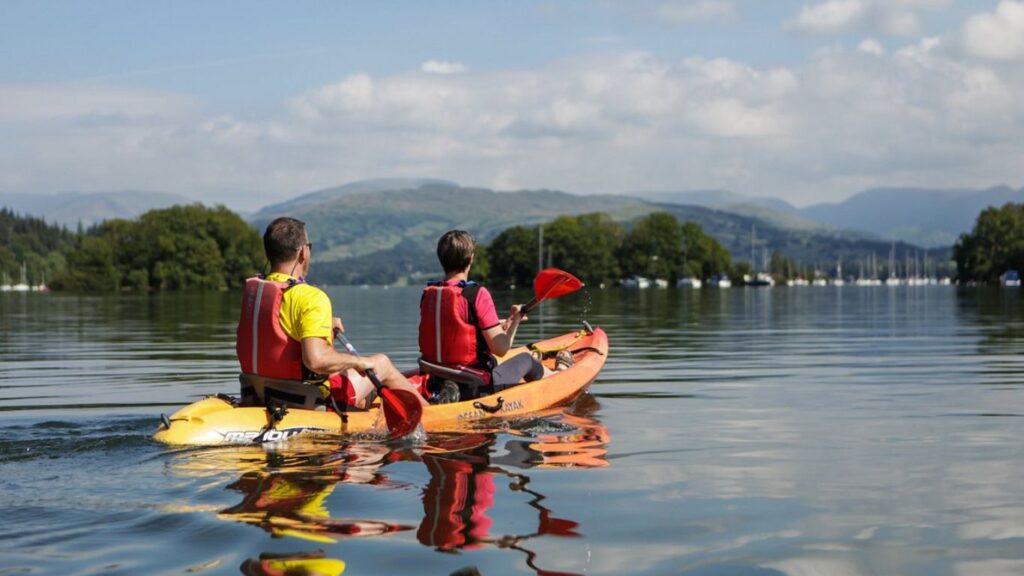
Windermere is a beautiful lake located in the Lake District of England. It is a popular location for kayaking fans.
Several places around Windermere offer kayaking services. One such place is Windermere Canoe Kayak located at The Boathouse, Bowness on Windermere LA23 3JH.
They offer a variety of kayaks and canoes for hire and have a range of modern craft at Low Wood Bay Watersports Centre, with sit-on-top kayaks and open canoes available to hire.
Another option is The Watersports Centre located at Low Wood Bay. They offer sit-on-top kayaks and open canoes for hire. The center is located on the Windermere shoreline, just a short 5-minute drive from Windermere or Ambleside.
Ullswater Kayaking
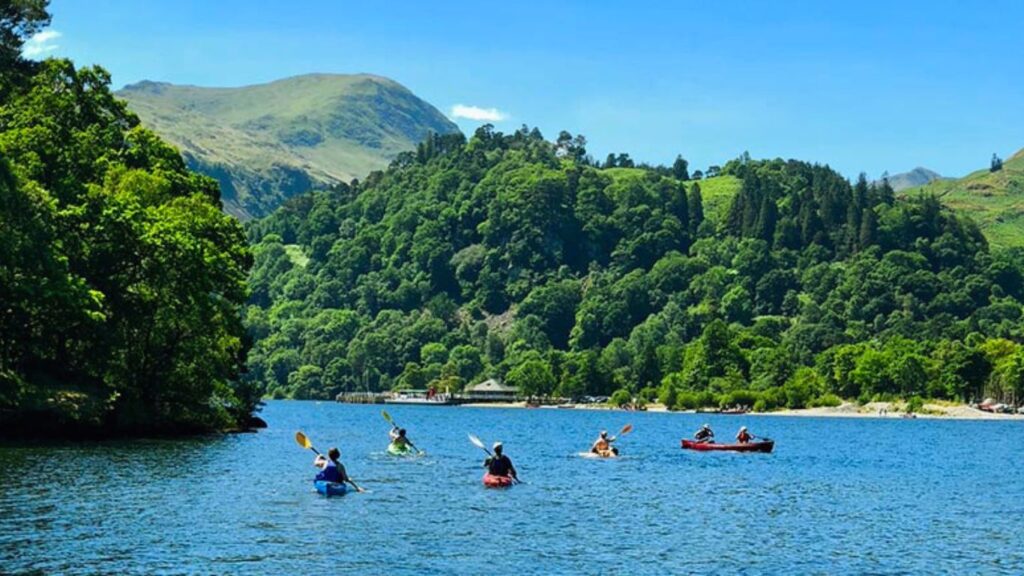
Ullswater is a beautiful lake in the Lake District of England, and kayaking is a great way to explore the area. Many kayaking tours are available in the area, such as Tall Bloke Adventures.
They offer kayaking tours that are tailored to your preferences and skill level. The tours are conducted using double sea kayaks (tandems) for maximum comfort, dryness, and stability.
The focus of the trip is to enjoy the views, have a chat, learn from others, and maybe pass on a bit of knowledge. There’s no set route; it depends on the weather and the group’s ability. Morning, afternoon, and evening trips are available.
The Glenridding Sailing Centre is another option for kayaking tours in Ullswater. They offer boat tours and water sports activities in addition to kayaking. Their instructors are highly skilled and experienced, ensuring that you have a safe and enjoyable experience on the water.
Thirlmere Kayaking
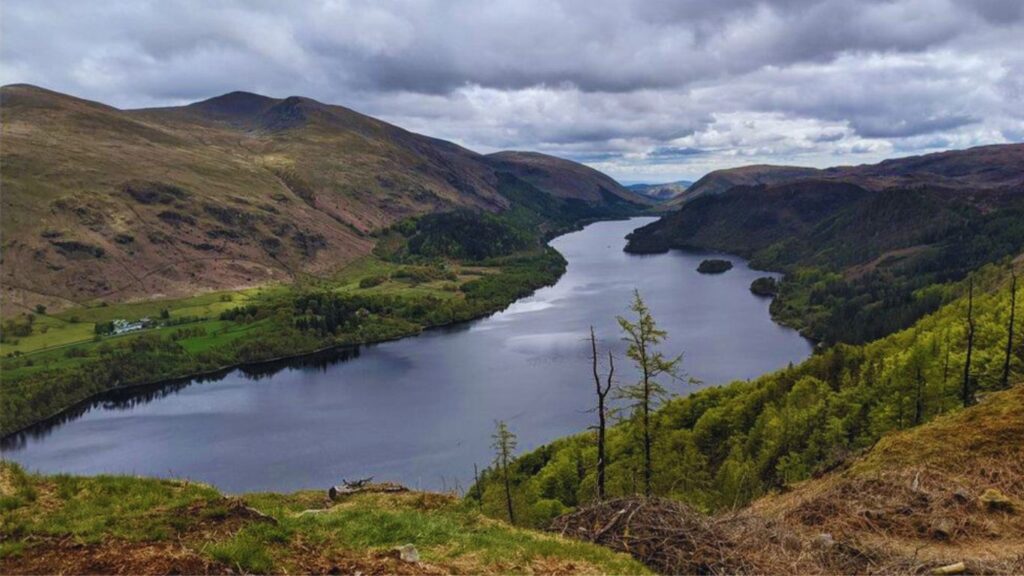
Thirlmere Reservoir is a large lake in the Lake District, England, that provides some of Manchester’s water supply. It is approximately 3 miles long and is surrounded by thick coniferous forest, providing panoramic views as you paddle through the peaceful lake.
The area was enclosed by a dam whose highest height is 104 feet. Thirlmere provides an excellent opportunity to go paddling, and it is one of the more hidden lakes in the Lake District, best appreciated by boat, canoe, or kayak.
Wastwater Kayaking
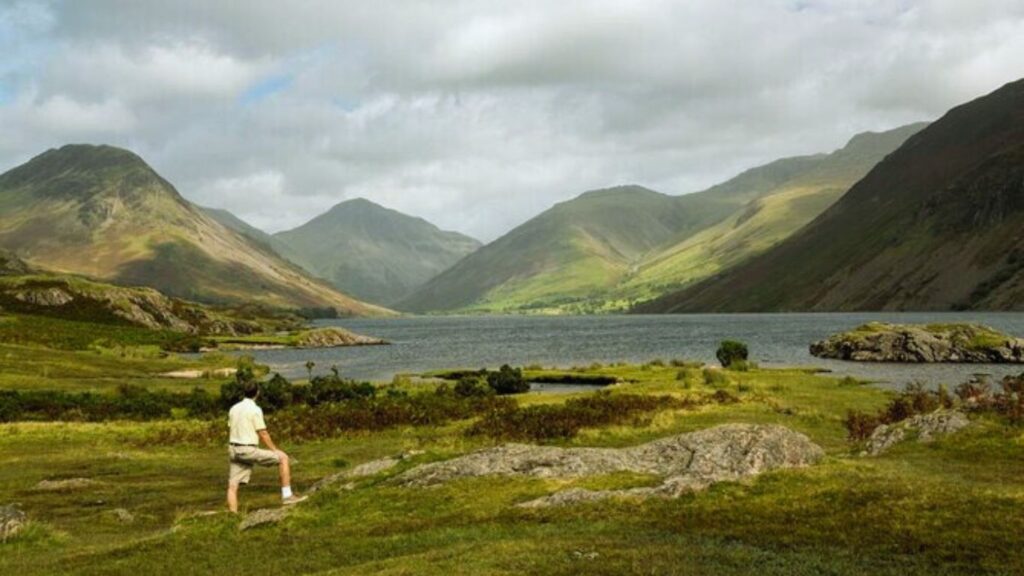
Wastwater is a glacial lake located in the Lake District National Park in England. It is owned by the National Trust and is almost 3 miles long, a third of a mile wide, and 258 feet deep.
The lake is surrounded by mountains including Red Pike, Kirk Fell, Great Gable, and Scafell Pike, England’s highest mountain. Wastwater is a quiet and secluded spot to SUP, canoe, or kayak.
West Lakes Adventure is a premier provider of a comprehensive range of outdoor adventures for individuals, families, groups, and organizations. They offer kayaking experiences on Wastwater that allow you to paddle beneath the splendor of the Scafell Massif from your boat on England’s deepest lake.
Kayaking Coniston Water
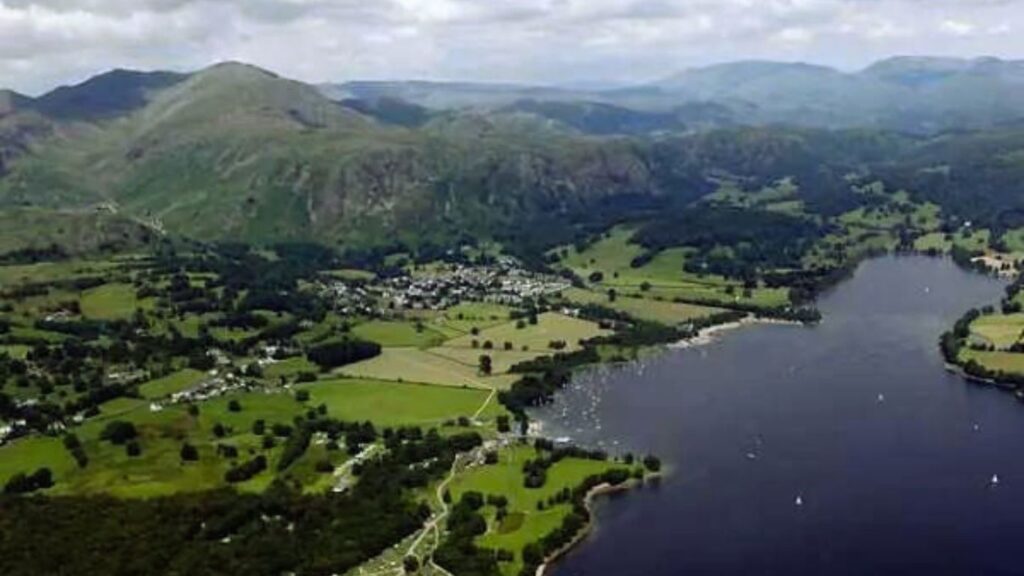
Coniston Water is a beautiful lake in the Lake District, UK, and kayaking is a popular activity there. You can hire kayaks from the Coniston Kayaking Centre. They offer single-seater and two-seater sit-on-top kayaks that are perfect for beginners and experts alike. The charges for kayak hire are as follows:
1 person in a single kayak: £25 (age 16+)
2 people in a double kayak: £30 (under 16’s allowed if with an adult)
Kayak hires are available for a maximum of 2 hours, and online bookings are only accepted. You can book your kayak online using their secure booking system. They provide buoyancy aids, brief instructions before hire, and clothing and footwear you don’t mind getting wet. However, they advise not to wear denim as it can make you cold. They also suggest bringing a mobile phone in case of emergencies, dry bags can be purchased from their shop, and a waterproof jacket and trousers would also be recommended.
For kayaking, quick-drying fabrics such as polyester and nylon as well as waterproof clothing are the best options to ensure you don’t get wet and cold. Generally speaking, you want to wear clothing that is flexible, long-lasting, and will protect you from cold and damp weather. It’s also important to dress for the water temperature, not the air temperature; this may mean wearing a wetsuit or dry suit.
Grasmere Kayaking
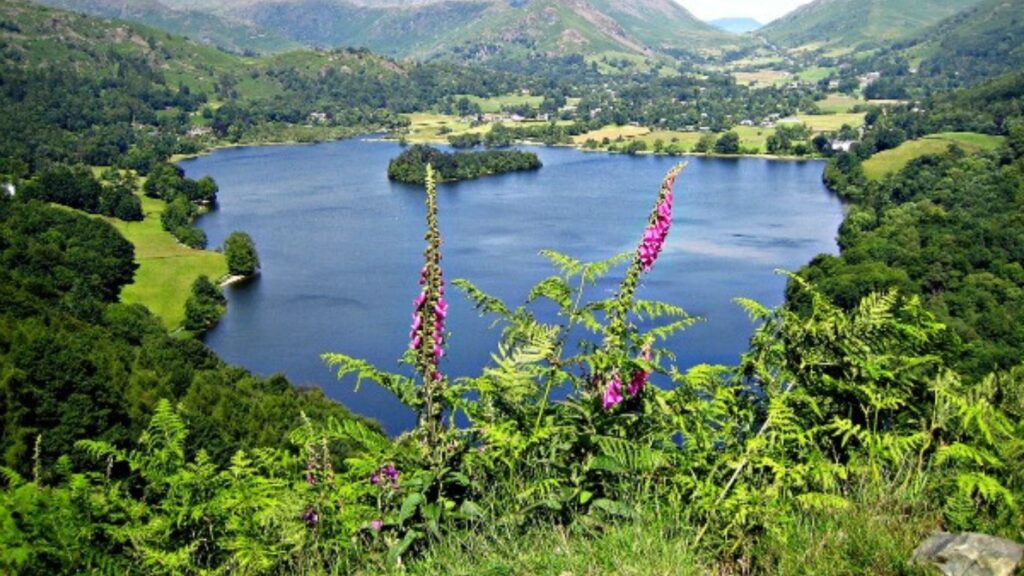
Grasmere Lake is a popular location for kayaking, canoeing, and stand-up paddleboarding in the Lake District. The lake is managed by the Lowther Estates, and the island on Grasmere is now in the possession of the National Trust. The island is home to a variety of wildlife, so it’s important to admire it from afar and not land on it.
There are no licensing requirements for paddling on Grasmere Lake. You can rent boats from the refreshment kiosk on the southwest shore of the lake.
If you’re planning to go kayaking, canoeing, or stand-up paddleboarding on Grasmere Lake, it’s important to plan with the weather and be well-prepared for a day on the water. You can find more information on paddling safely on lakes at.
Kayaking the River Crake
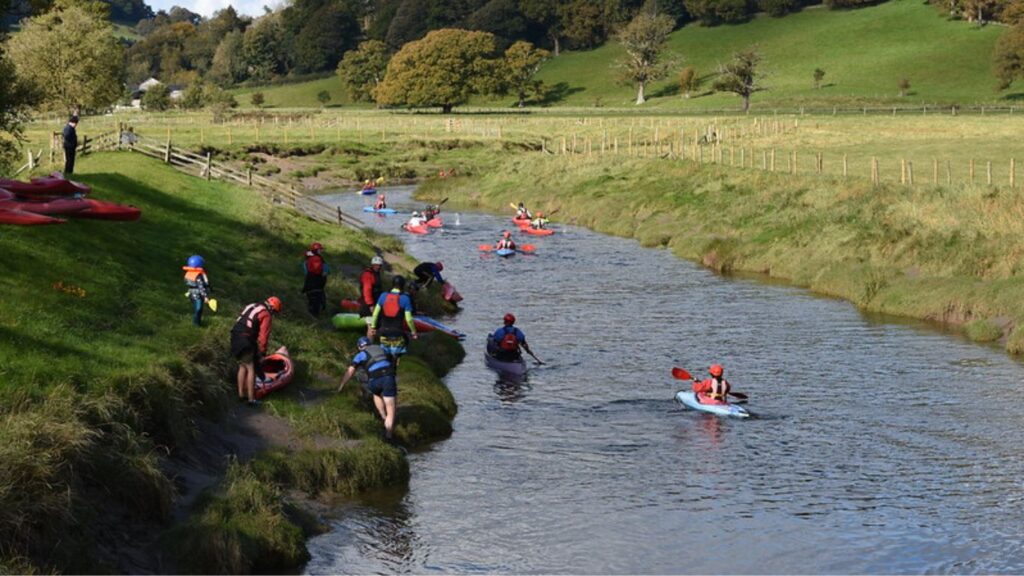
I found some information about kayaking the River Crake in the north-west of England. The River Crake is a short river that flows out of Coniston Water in the Lake District and meets the tidal waters of an estuary at the top end of Morecambe Bay.
It’s a narrow and often rocky creek of a river, never reaching any great width. It’s fast and somewhat technical in places but all manageable in a canoe if you can maneuver the boat around with accuracy. The river is graded as 2 and easy grade 3, with grade 3 being hard to inspect or portage.
Kayaking the River Crake is one of many short but compelling canoe trips one can undertake in the northwest of England. It’s a worthwhile adventure in the canoe. If you’re interested in kayaking this river, you can find more information about access points, water levels, hazards, and more on the UK Rivers Guidebook.
Kayaking the River Derwent
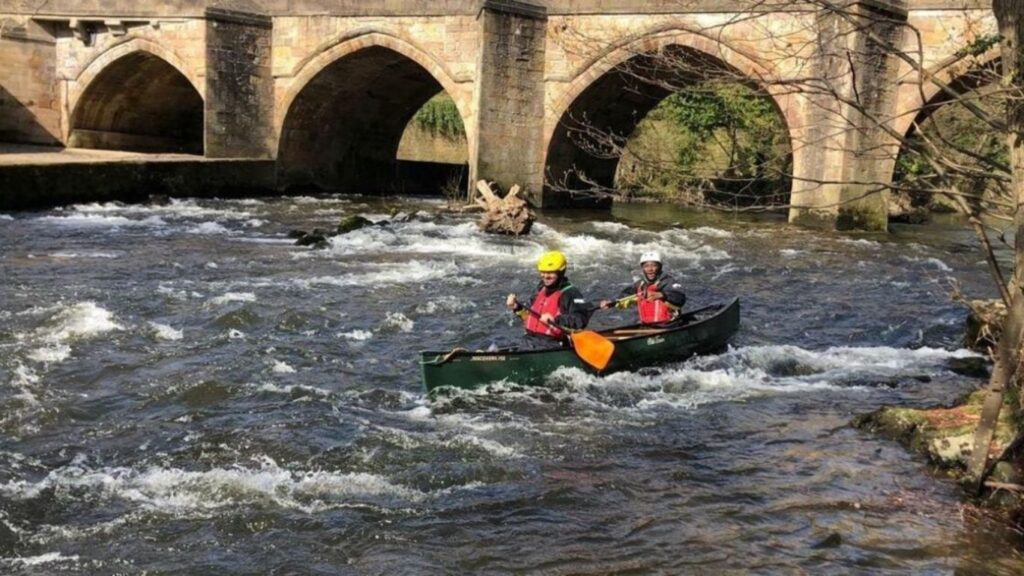
The River Derwent offers a picturesque route for those who wish to kayak its waters. It is an ideal venue for kayakers of different levels of expertise, given its various parts with different flows and scenic views.
Starting at its source in the Pennines, the Derwent flows through moorlands and limestone dales, offering a wonderful setting for all nature enthusiasts. You’ll be met with clear waters and tranquil surroundings as you paddle downstream.
As you reach Derwent Reservoir, the river widens and the flow becomes calmer. Here, you can take a leisurely pace, spot the diverse wildlife, and take in sights of outstanding beauty.
Further downstream, the Derwent passes through the industrial city of Derby. Here the river becomes navigable for larger vessels, and carefully manoeuvering around them adds an interesting challenge to the kayaking experience.
The river eventually meets the Trent near Long Eaton. The confluence of these two rivers offers a beautiful panorama that can be viewed from your kayak.
It’s essential to ensure you are equipped with all the necessary safety gear, such as a life jacket, helmet, and whistle. As the conditions on the river can change, always have a local contact, and be updated with the weather forecast and water levels.
Kayaking the River Derwent can be a serene and enjoyable journey with the right preparations. The opportunity to explore various landscapes, observe abundant wildlife, and experience diverse paddling conditions makes this a popular river for kayaking. Whether you’re a seasoned paddler or a beginner, the River Derwent is sure to provide a memorable experience.
Bassenthwaite kayaking

Bassenthwaite Lake, located in the Lake District in the northwest of England, is an excellent place to enjoy a peaceful day of kayaking. This lake, fed by the River Derwent, is one of the largest and most picturesque in the district, surrounded by stunning hills and forests.
To start your kayaking adventure, you would want to make sure you have appropriate equipment suited to your experience level and weather conditions. This includes a suitable kayak, paddle, life jacket, and possibly a wet suit if the weather is cooler.
Bassenthwaite Lake offers calm, clear waters, making it an ideal environment for both novice and experienced kayakers. The lake has an average depth of about 70 feet, and extends up to 4 miles in length, providing ample space for exploring. Plus, it’s a great way to view the local wildlife, including the rare Osprey, which nests nearby.
However, please note, Bassenthwaite Lake is a protected area due to its status as a Site of Special Scientific Interest and access to the water is limited and regulated to preserve the area’s wildlife and water quality. It’s always advisable to consult local authority guidelines or boating clubs for information on access points and any restrictions before planning your kayak outing.
Whether you are a practiced kayaker seeking serene surroundings, or a beginner looking for a safe and beautiful spot to paddle, Bassenthwaite Lake offers an excellent kayaking experience. Paddling on its calm, expansive waters amidst the tranquil beauty of the Lake District is truly invigorating.
kayaking Buttermere
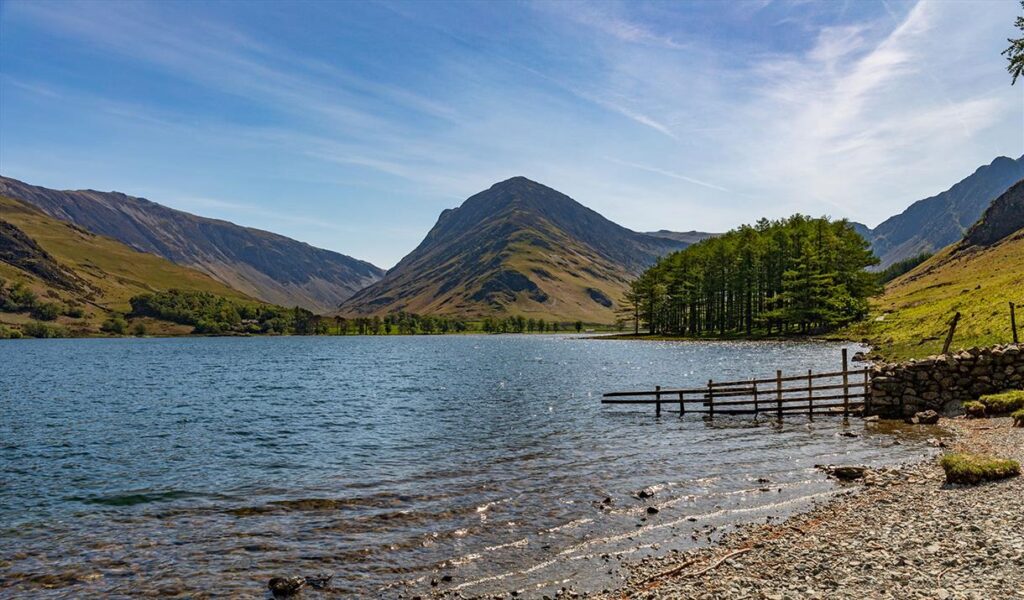
Buttermere Lake, nestled in the scenic environs of the Lake District in North West England, holds immense appeal for those passionate about kayaking. Maintained by the National Trust, the lake spans 1.24 miles in length, is 620 yards wide, and reaches a depth of 75 feet.
If you’re keen on exploring these tranquil waters by kayak, you will need to secure a permit from the National Trust. This location is not just a haven for kayakers but also for walkers.
The surrounding terrain, particularly the paths leading to the summits of Haystacks and Red Pike, is considered some of the most exquisite walking country in Lakeland.
Ennerdale Water Kayaking
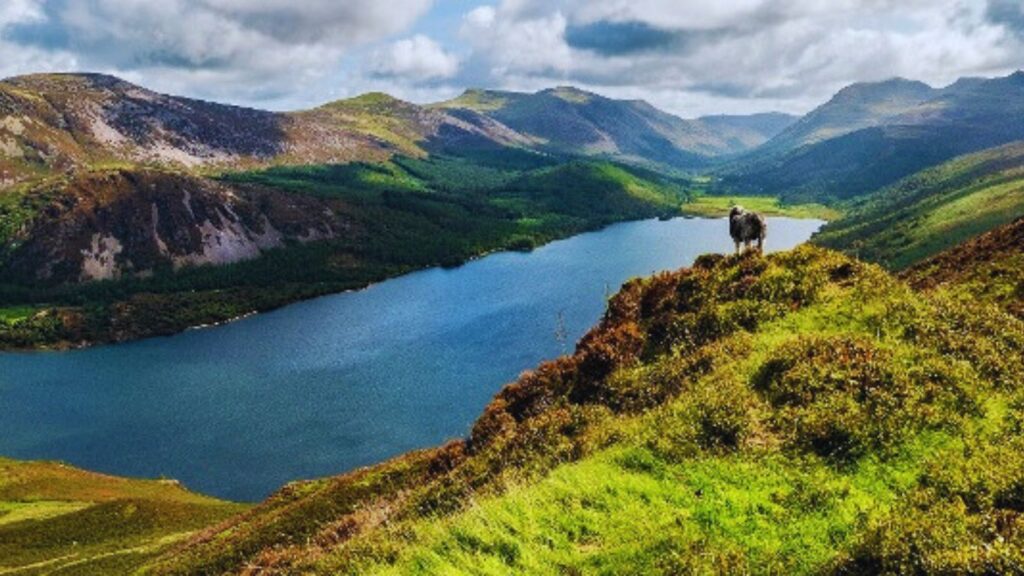
Ennerdale Water, nestled in the heart of the Lake District National Park in Cumbria, England, offers an extraordinary kayaking destination. As a 2.5-mile-long glacial lake with a maximum depth of 150 feet, Ennerdale Water appeals to kayaking enthusiasts of varied skill levels.
The lake is enveloped by some of Cumbria’s loftiest and best-known fells, such as Great Gable, Green Gable, Brandreth, High Crag, Steeple, and Pillar. These provide a picturesque backdrop for kayakers.
Ennerdale Water’s remote location works in favor of those seeking tranquillity during their paddling adventures. Even during peak summer, the calmness of the area remains undisturbed, offering an optimum kayaking experience.
There are no restrictions on kayaking at the lake, making it a flexible choice for users. However, large groups, as well as commercial and activity providers, must obtain permits before commencing their activities. This ensures a manageable number of users on the water at any given time, further preserving the lake’s restful nature.
The lake is supplied by the River Liza and several streams and eventually contributes to the River Ehen ultimately reaching the Irish Sea. This holistic hydrological system adds another layer of interest for those attracted to exploring natural features.
Kayaking Techniques for Beginners
Kayaking is a fun and exciting way to explore the waterways. Beginners should focus on the following paddling techniques:
Forward Stroke:
This is the most fundamental and frequently used technique. Hold the paddle with both hands, with your shoulders wide apart. Put the paddle blade in the water near your feet and push it straight along the side of the kayak until it reaches your hip. Then lift it out of the water, repeat the process on the other side, and keep alternating.
Reverse Stroke:
This stroke works in the opposite direction of the forward stroke and is used to move the kayak backward. Start the stroke at your hip and push the paddle forward to the feet.
Sweep Stroke:
This technique is used for turning the kayak. A forward sweep stroke involves keeping the paddle parallel to the boat and moving it in a wide arc, from the front to the back.
Getting in and out of a kayak can be tricky, but with practice, it can be done with ease. To get into a kayak:
- Place the kayak in shallow water so it is stable.
- Stand over the kayak, balancing yourself with your hands on both sides of the cockpit.
- Sit in the kayak seat and carefully lift your legs into the cockpit.
To Get ut:
- Paddle your kayak into shallow water.
- Put your paddle across the boat behind the cockpit to steady it.
- Swing your legs out one at a time and then stand up.
Steering and maneuvering a kayak requires some techniques that are easy to learn with practice. To turn right, use a wide, low arc sweep stroke on the right side of your kayak almost like drawing a semi-circle with your paddle. To turn left, use this same stroke on the left side of your kayak. To maintain a straight line while kayaking, it’s important to keep a rhythmic alternate paddling on each side of your kayak. If your kayak is equipped with a rudder or foot pedals adjust these for finer control over steering.
Remember, practicing these techniques in calm water is highly recommended before moving onto faster-flowing rivers or sea kayaking.
Lake District Kayak Safety Tips
Kayaking in the Lake District is a wonderful way to enjoy the scenic beauty and natural diversity of this region. However, it is also important to follow some safety tips to ensure a fun and safe experience. Here are some of the main safety tips for kayaking in the Lake District:
Always wear a life jacket or personal flotation device (PFD) and ensure it fits comfortably. In addition, consider wearing a helmet, especially if you plan to kayak in rougher waters or near rocky areas.
Dress appropriately for the weather and water temperature, wearing layers and choosing quick-drying, moisture-wicking materials. Invest in a drysuit or wetsuit if you are kayaking in cold water or during winter.
Never kayak alone it’s more fun (and safer) with a friend. If you are new to kayaking, consider hiring a guide or joining a group tour. You can find many kayak rental and tour companies in the Lake District, such as Windermere Canoe and Kayak or Ullswater Outdoor Adventures.
Do not drink and paddle recipe for disaster and against the law. Also, avoid taking any drugs or medications that may impair your judgment, balance, or coordination. Pack an emergency kit that includes a whistle, flashlight, first aid kit, spare paddle, repair kit, map, compass, and communication device. You can also carry a waterproof bag or container to store your valuables and snacks.
Before you leave, check the water and weather forecasts. Avoid kayaking in strong winds, storms, fog, or choppy waters. Be aware of the wind direction and speed, as it can change suddenly and make paddling much harder.
Choose a suitable location for your skill level and interests. The Lake District has many lakes and rivers to explore, each with its features and challenges. Some of the most popular ones are Lake Windermere, Lake Ullswater, Wast Water, Derwentwater, Coniston Water, Bassenthwaite Lake, and Grasmere Lake. You can also find some maps of the lakes for water users on the Lake District National Park website.
Follow the rules and regulations of the Lake District National Park and respect the wildlife and environment. Do not litter, disturb, or harm any plants or animals. Keep a safe distance from other boats and water users. Always go two ferry lengths behind the vehicle ferry.
Learn some basic kayaking skills and techniques, such as how to paddle efficiently, steer, balance, turn, stop, and exit your kayak. You can also learn how to perform a self-rescue or assist another kayaker in case of a capsize.
Have fun and enjoy the views! Kayaking in the Lake District is a great way to experience the stunning landscapes, wildlife, and culture of this region. You can also combine kayaking with other activities such as hiking, cycling, camping, fishing, or sightseeing.
Conclusion
I hope you enjoyed this blog post and learned something new about kayaking in the Lake District. Kayaking is a wonderful way to experience the natural beauty and wildlife of this region and to have some fun and adventure on the water. Whether you are a beginner or an expert, you will find a suitable place to kayak in the Lake District, as there are many lakes and rivers to choose from, each with its features and challenges.
If you are interested in kayaking in the Lake District, you will need to prepare some equipment and safety measures, as well as obtain a permit from the relevant authorities. You can also find many kayak rental and tour companies in the area, which can provide you with the necessary guidance and support. You can also check out some of the online resources and guides that can help you plan your kayaking trip in the Lake District.
Kayaking in the Lake District is a great way to explore the region’s natural beauty and wildlife. With its calm waters, stunning scenery, and variety of routes, it’s no wonder that this area is such a popular destination for kayaking enthusiasts. So if you’re looking for an adventure that combines exercise, relaxation, and natural beauty, then kayaking in the Lake District is worth considering.
Thank you for reading this blog post. If you have any questions or comments, please feel free to leave them below. We would love to hear from you. And if you liked this post, please share it with your friends and family. Happy kayaking!
FAQS
What are Some of the Best Places to Kayak in the Lake District for Beginners?
Some of the best places to kayak in the Lake District for beginners are Windermere, Ullswater, Coniston Water, and Grasmere. These lakes are relatively calm and offer stunning views of the surrounding mountains and forests. They are also easy to access and have plenty of facilities nearby.
Where Can I Rent or Buy a Kayak in the Lake District?
There are many kayak rental and tour companies in the Lake District that can provide you with the necessary equipment and guidance. Some of the most popular ones are Windermere Canoe Kayak, The Watersports Centre, Tall Bloke Adventures, and Glenridding Sailing Centre. You can also find some shops that sell kayaks and accessories, such as Go Kayaking North West and Keswick Mountain Adventures.
Do I need a Permit to Kayak on Windermere?
No, you do not need a permit to kayak on Windermere. Windermere is one of the four navigable lakes in the Lake District National Park, along with Ullswater, Derwentwater, and Coniston Water. These lakes do not require a licence for kayaking or other non-motorized watercraft.
Can I Kayak on Lake Windermere?
Yes, you can kayak on Lake Windermere. It is a beautiful lake in the Lake District National Park that offers stunning scenery and wildlife. You can hire a sit-on-top kayak or an open canoe from Windermere Canoe Kayak, which is located on the shore of the lake.
Is Kayaking Difficult for Beginners?
Kayaking is not difficult for beginners, but it depends on how you learn, what kind of kayak you use, and where you paddle.

Nigel Foster, born in 1952, is an esteemed sea kayaker, known for being the youngest to kayak around Iceland. His journey in kayaking started at 15 in Brighton, England. With a career beginning as a trainee instructor in Sussex, he later pursued teaching after attending Redland College, Bristol.
Foster’s notable expeditions include navigating the challenging waters of Newfoundland and the Hudson Strait. Despite facing intense conditions, his passion for kayaking never waned. He holds several British Canoe Union qualifications and has significantly contributed to the kayaking community through teaching and committee work.
In 1985, Foster expanded his horizons by assisting an expedition in Iceland and later founded his own kayaking business, sharing his expertise globally.
